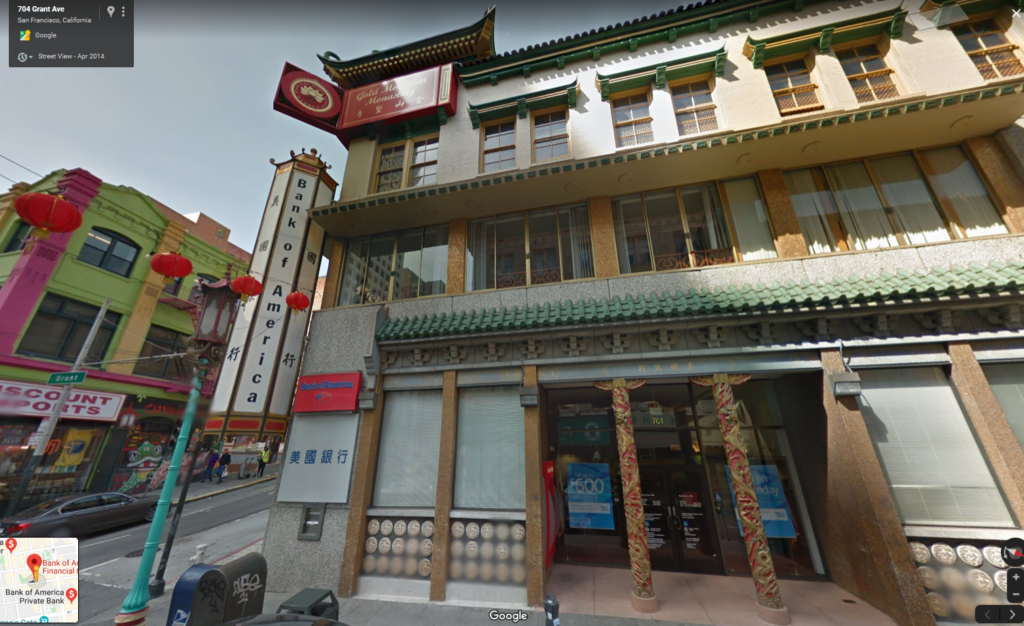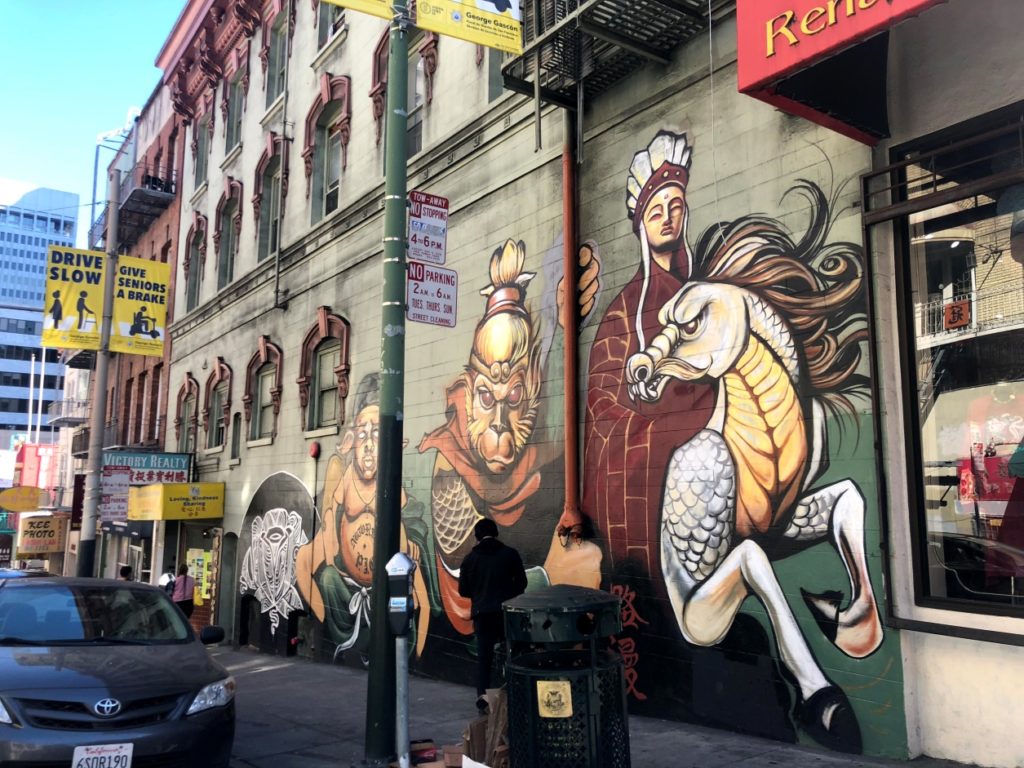Linguistic and Semiotic Landscapes in the Context of Chinatown, San Fransico
As I have no real linguistic background, I don’t have a wide variety of experience to pull from to discuss these readings in context, nor do I have the necessary grasp of the material to discuss them purely theoretically. Instead, I’ll be starting off by discussing them in the context of my recent trip to Chinatown while I was in San Francisco for an academic conference. The night after I flew in, I resolved to have dinner in Chinatown before the conference started and ate up all my time. Walking through an unfamiliar city after sundown is a daunting prospect, of course, and I wasn’t sure I would be able to find the right place. I wanted an authentic Chinatown experience, after all, not some restaurant for tourists. I needn’t have worried, of course: every aspect of the landscape made it immediately obvious that I had arrived in the right spot, from the signage to the buildings themselves. For context, here’s the Bank of America where I went for an ATM to get cash for dinner, as seen on street view:

There are a number of elements of the linguistic landscape that can be seen in this picture which tie directly into the readings. To begin with, we see the distinction between government and private signs observed by both Gorter and Backhaus: while much of the bank’s signage is multilingual, the street sign is in English only. This pattern is continued throughout the neighborhood. Street signs and other official signage are in English only, without even an attempt to translate them into Chinese, while storefront signage includes both English and Chinese. As I cannot read Chinese, I cannot determine if these signs are using mutual translation or are complimentary, according to Backhaus’ definitions. Applying Backhaus’ concept of the direction of translation, however, most of these signs seem to have English first and Chinese second. This could be interpreted a power dynamic that prioritizes English fluency, either adopted from or imposed by the larger US community, while the use of Chinese in signage might be stylings of cultural identity rather than purely functional.
This can be further understood through the semiotic relationship between text and space, as outlined by Jaworski and Thurlow. The official bank signage (the red sign with the logo and the promotions in the windows) is written in English only, being standardized signs designed by corporate headquarters. However, they are supplemented with more localized signage that mixes English with Chinese, and even writes out the bank’s English name vertically, in the style of Chinese writing. This is supplemented by the design of the bank itself, with traditionally designed pillars and roof tiling. Elsewhere in the neighborhood, buildings with more modern designs, surrounded by official signage in English, are reclaimed through graffiti, such as this mural which is a clear part of the semiotic landscape despite lacking any words:

This all serves to clearly define the neighborhood without the need for any explicit boarder markers. The Dragon Gate serves as the entryway to Chinatown, claiming the space just as is described in the readings, but this is symbolic, not literal. The neighborhood is not walled off; I entered it without ever walking through the Dragon Gate. Nonetheless, it was quite clear to me when I had entered Chinatown.
Identity Construction through Linguistic Landscapes
Th initial conceptualizations of linguistic landscapes presented by Gorter focus predominately on the choice of language in signage, which demonstrates what languages and dialects are considered to have value in the region. The semiotic perspective suggests that the textual content has significance as well in how it ties to place. Jaworski and Thurlow are largely concerned with how text can lay claim to space, but they focus less on how the content of a linguistic landscape can be part of the identity construction of those who inhabit the space, displaying ideologies about far more than just language. The closest they come to this point is when they reference the use of covert racist grafitti. Linguistic landscapes can be much more explicitly ideological, though, a fact well known to anyone stuck behind this guy in traffic:

The linguistic landscape includes not only the street signs and storefront advertisements, but the campaign signs in the yards and the hats on our heads. This is by no means a new development. The explicit ideological expression in the linguistic landscape isn’t a new development; there was a time not too long ago when “Whites Only” signs were a regular part of the landscape of many cities.
What’s new about today’s linguistic landscape is that it extends online. Heyd discusses how online activity showcases and judges linguistic practices, and activity I’m now continuing here in this blog post. I would argue further that the online world has become part of the linguistic landscape. Traditional websites (web 1.0) are carefully constructed just as a billboard or storefront might be, and even a Facebook page or twitter feed is occupies a similar space in the landscape a public, all access, bulletin board. Although in the current political climate, the more appropriate comparison in physical space might be an racially charged argument unfolding on the walls of a bathroom stall.


